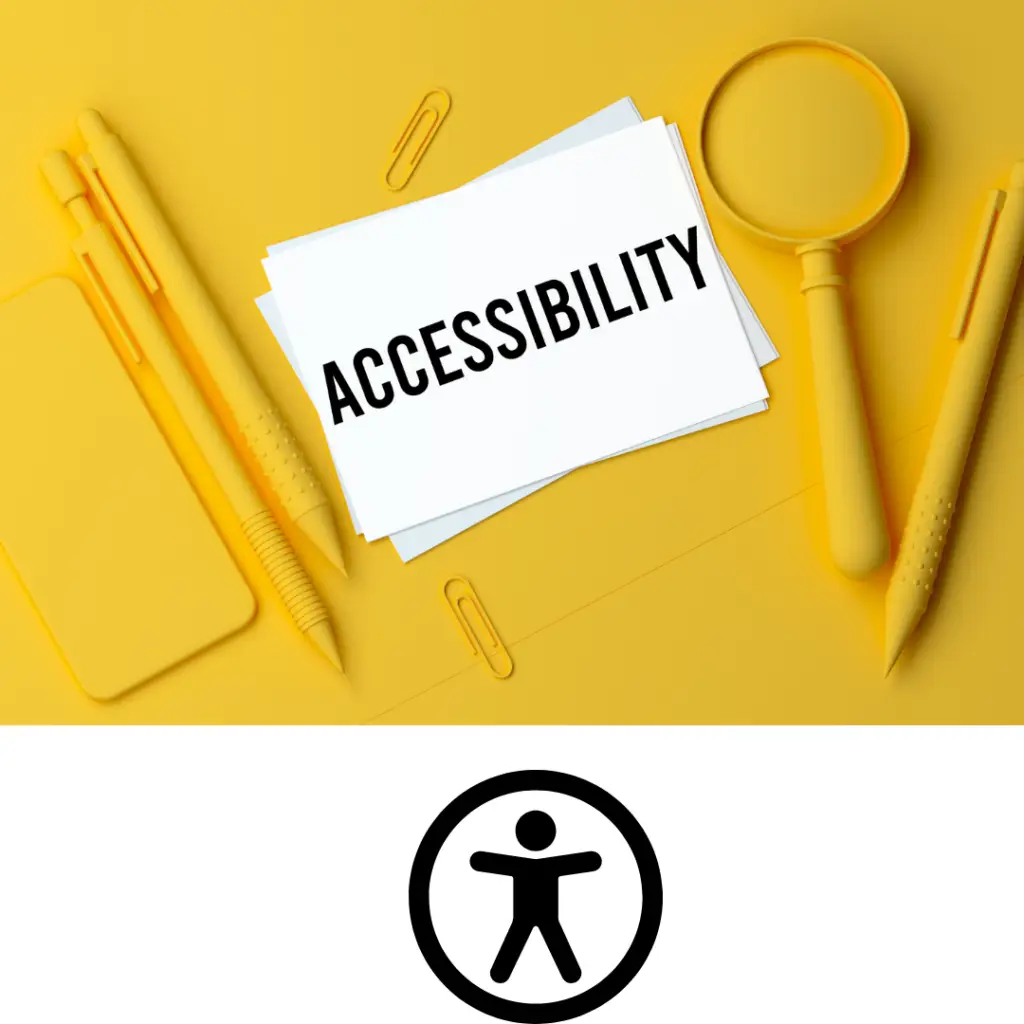
Website Accessibility not only enhances the user experience but also ensures that no one is excluded from accessing essential information and services online. For marketers and designers, accessibility should be a top priority from both a compliance and brand perspective.
This guide explores UK-specific legal requirements, highlights the benefits of accessible websites, identifies common accessibility pitfalls, and provides actionable best practices aligned with the latest international standards.
Understanding Accessibility Compliance
In the UK, digital accessibility is covered under the Equality Act 2010, which requires businesses, service providers, and public sector bodies to make “reasonable adjustments” for people with disabilities. While this legislation doesn’t explicitly mention websites, its scope includes online services and digital communications. Non-compliance can result in legal action, reputational damage, and lost business opportunities.
For public sector organisations, the Public Sector Bodies (Websites and Mobile Applications) Accessibility Regulations 2018 sets clearer requirements. These regulations mandate that websites and apps must meet the Web Content Accessibility Guidelines (WCAG) 2.1 AA standard and publish an accessibility statement.
Even private businesses should treat this as a benchmark. As digital services become central to daily life, accessible websites are no longer optional—they are expected.
What Are the Web Content Accessibility Guidelines (WCAG)?
The WCAG are developed by the World Wide Web Consortium (W3C) and serve as the global standard for web accessibility. The guidelines are based on four key principles, collectively known as POUR:
- Perceivable – Content must be presented in ways that all users can recognise and understand, including those using screen readers or other assistive technologies.
- Operable – Users must be able to navigate and interact with the interface, regardless of whether they use a mouse, keyboard, or other input devices.
- Understandable – Content must be clear, readable, and predictable in its behaviour.
- Robust – Websites must work well with a wide variety of assistive technologies, both now and in the future.
Meeting Level AA of WCAG 2.1 is considered the baseline for legal compliance and best practice in the UK and across the EU.
Why Accessibility Compliance Matters
1. It’s the Law
In the UK, businesses and service providers must comply with the Equality Act 2010. This legislation prohibits discrimination against individuals with disabilities and requires “reasonable adjustments” to ensure equal access. If your website is not accessible and a disabled person is unable to use it, you could be liable for failing to meet these obligations.
Legal action can be initiated either by individuals or by the Equality and Human Rights Commission (EHRC). While high-profile court cases are still less common than in the US, the risk is real—and growing.
2. Brand Reputation and Social Responsibility
An accessible website reflects positively on your brand, demonstrating that your organisation values diversity, inclusivity, and equal opportunity. Businesses that take the lead on accessibility are more likely to build customer trust and loyalty.
Failing to be inclusive, on the other hand, risks alienating a significant portion of the population. It may also generate negative publicity if individuals or disability rights groups raise concerns publicly.
3. Reach a Wider Audience
According to the Office for National Statistics (ONS), around 14.6 million people in the UK live with a disability. Globally, the World Health Organisation (WHO) estimates over 1 billion people have some form of disability. Making your website accessible can dramatically widen your potential audience and increase conversions from groups that might otherwise be excluded.
4. Improved SEO and Website Performance
Many accessibility best practices—like using semantic HTML, proper heading structure, and alt text for images—also improve SEO. Google’s algorithms favour websites that are easy to navigate and understand, benefiting from increased visibility in search results.
Accessibility is also linked to faster loading times, improved mobile usability, and better overall performance, all of which impact bounce rate and user engagement.
Common Accessibility Barriers
Even with the best intentions, many websites fail to meet accessibility standards. Here are some of the most frequent issues:
Lack of Alternative Text
Images without descriptive alt text are one of the most common accessibility failings. Visually impaired users rely on screen readers to understand visual elements. Without alt text, critical content is lost.
Poor Colour Contrast
Low contrast between foreground text and background colours can make reading difficult for users with low vision or colour blindness. WCAG 2.1 recommends a contrast ratio of at least 4.5:1 for normal text and 3:1 for large text.
Inaccessible Forms
Forms that are missing labels, have unclear instructions, or don’t support keyboard navigation can create barriers. Each input field should have a programmatically associated label and clear error messaging.
Keyboard Navigation Failures
Some users navigate solely using a keyboard. If buttons, menus, or form fields can’t be accessed via the Tab key, these users are effectively locked out of key website functions.
Unclear Link Text
Using generic link text like “click here” or “read more” doesn’t tell users—especially those using screen readers—where the link will take them. Descriptive links such as “View our accessibility compliance checklist” provide clarity.
Best Practices for Ensuring Website Accessibility
To build an inclusive and legally compliant website, marketers and designers should embed accessibility from the start. Here’s how:
1. Start with Accessible Design Principles
Use clear fonts, adequate spacing, and strong contrast. Avoid overly complex layouts. Make sure elements don’t rely solely on colour to convey information—use text labels and symbols as well.
2. Follow WCAG 2.1 AA Standards
Familiarise yourself with the latest WCAG guidelines. Many tools, checklists, and training resources are available through W3C and the UK Government Digital Service.
3. Use Semantic HTML and ARIA Landmarks
Proper use of HTML tags (e.g. <nav>, <main>, <article>, <header>) helps assistive technologies understand the structure of your page. Where needed, use ARIA (Accessible Rich Internet Applications) roles and labels to enhance accessibility.
4. Make All Content Keyboard Accessible
Test your site using only a keyboard. Ensure all interactive elements, including dropdowns, modals, and sliders, can be accessed and used without a mouse.
5. Include Descriptive Alt Text
Every image, infographic, icon, and video thumbnail should include accurate, descriptive alt text. Avoid keyword stuffing—focus on clarity and usefulness.
6. Ensure Dynamic Content is Accessible
Elements like pop-ups, accordions, and auto-updating feeds can be problematic. Use ARIA roles and attributes to notify users of changes, and ensure updates are accessible to screen readers.
7. Use Plain English and Clear Navigation
Avoid jargon and overly technical language. Use simple, concise wording wherever possible. Your navigation should be logical, consistent, and easy to understand.
8. Test Regularly
Use tools like:
- WAVE by WebAIM – Browser-based evaluation tool
- Axe by Deque Systems – Chrome and Firefox extension
- Google Lighthouse – Audits performance, accessibility, SEO
- Siteimprove – Enterprise-level accessibility testing
Automated tools won’t catch everything. Combine them with manual testing, including screen reader use (e.g. NVDA or VoiceOver), and include users with disabilities in usability tests.
Creating an Accessibility Statement
For public sector organisations, publishing an accessibility statement is a legal requirement. But for private businesses, it’s still a good practice. A well-written accessibility statement should include:
- The accessibility standard your site aims to meet (e.g. WCAG 2.1 AA)
- Known accessibility issues
- Plans for resolving them
- Contact information for users who experience difficulties
It signals transparency and commitment to inclusivity.
Building an Accessibility-First Culture
Making your website accessible isn’t a one-time task—it’s an ongoing responsibility. Encourage your teams to view accessibility as a shared value rather than a checkbox. Here’s how:
- Provide training to marketing, design, and development teams
- Include accessibility in project scoping and planning
- Use inclusive imagery and language in content
- Set accessibility KPIs and track progress
Creating a culture of accessibility ensures it remains a priority as your website evolves.
Accessibility is Everyone’s Responsibility
Website accessibility in the UK is not just about avoiding legal trouble. It’s about ensuring that everyone—regardless of ability—can participate in digital spaces equally. For marketers and designers, accessibility is an opportunity to lead with empathy, reach a wider audience, and deliver superior digital experiences.
By aligning with UK regulations and global standards like WCAG, you not only safeguard your organisation from legal risks but also build a brand that champions inclusion. It’s time to move accessibility from the margins to the core of your digital strategy. We currently offer Digital Marketing training which covers accessibility in digital marketing and in website design. If you want to learn more check out our page.









